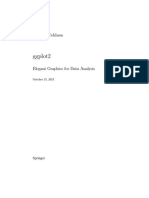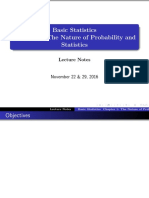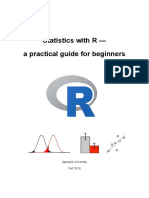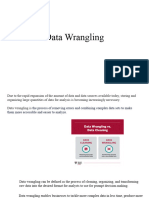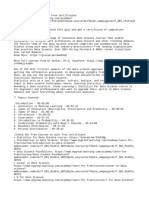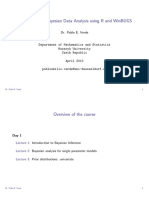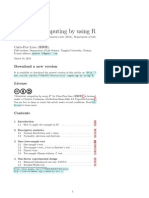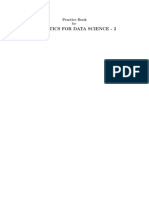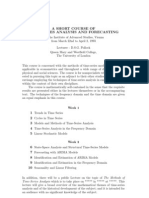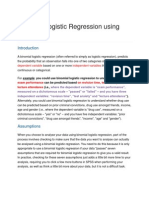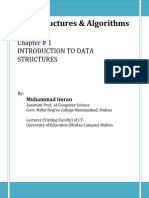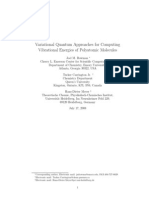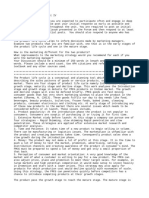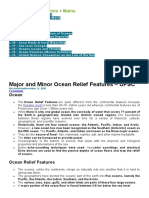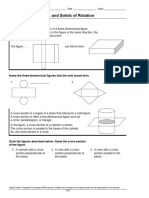0% found this document useful (0 votes)
223 views72 pagesAdvanced R Data Analysis Training PDF
This document provides an agenda for an Advanced R Data Analysis training course. The training will cover obtaining data from various sources, exploring and cleaning data, preprocessing such as selecting, filtering and arranging data, data reshaping, and advanced visualization techniques using R packages like ggplot2. The training is led by Dr. Ghazaleh Babanejad who has a PhD in data science and experience working on machine learning and data science projects.
Uploaded by
Anonymous NoermyAEpdCopyright
© © All Rights Reserved
We take content rights seriously. If you suspect this is your content, claim it here.
Available Formats
Download as PDF, TXT or read online on Scribd
0% found this document useful (0 votes)
223 views72 pagesAdvanced R Data Analysis Training PDF
This document provides an agenda for an Advanced R Data Analysis training course. The training will cover obtaining data from various sources, exploring and cleaning data, preprocessing such as selecting, filtering and arranging data, data reshaping, and advanced visualization techniques using R packages like ggplot2. The training is led by Dr. Ghazaleh Babanejad who has a PhD in data science and experience working on machine learning and data science projects.
Uploaded by
Anonymous NoermyAEpdCopyright
© © All Rights Reserved
We take content rights seriously. If you suspect this is your content, claim it here.
Available Formats
Download as PDF, TXT or read online on Scribd
/ 72














